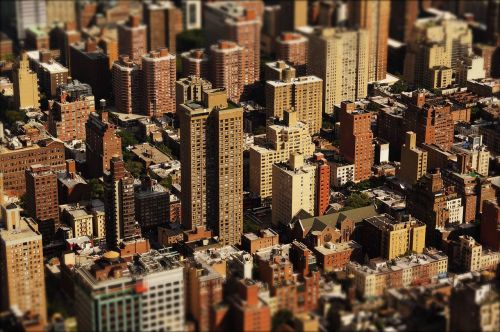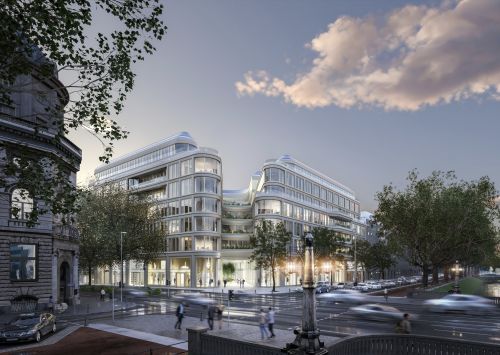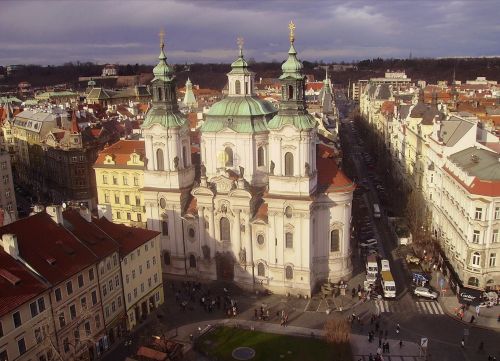Die another day
It has been suggested that ul. Chmielna in the centre of Warsaw is "slowly dying" and taking a stroll down there from ul. Szpitalna, it is difficult to ignore the empty shops, on whose smudged windows signs declare 'Likwidacja Sklepu', (Closing Down).
In the city's new temples of shopping however, the retail centres, planted amid large residential districts, hundreds of shoppers mill around at any one time. At a glance, it almost seems that these huge arenas of consumerism are sucking in customers from the streets, never to return them.
Awkward ownership
Whilst no major city is defined by how or where its citizens shop, local
purchasing habits do of course play a significant role in adding shape to a
city: London, for example, wouldn't be quite London without Oxford Street.
Perhaps Warsaw's main high streets, ul Chmielna and Nowy Swiat, will always
struggle to become magnets for the city's shoppers, given the total destruction
it suffered in World War 2 and the displacement caused by Communist-era
reconstruction. Pre-War Warsaw was by contrast a bustling metropolis. There is
also the awkward problem of property ownership in the centre, according to Peter
Evans of Lambert Smith Hampton: "in Warsaw, buildings [which house shops]
are owned by individuals whereas with Oxford Street, each side of it is the
property of a different pension fund, which means amalgamating buildings is
easier and you can create more viable shopping units".
The issue of ownership, this time of land in Warsaw, is also one reason those
hulking retail centres have been cropping up well away from the CBD. They've
been developed, says Ian Elliot of Jones Lang LaSalle, "at the fringe of
town because land was available there. They were the only places retailers could
go," who he adds however, are "are still keen on the town centres".
There also remains the open question of Złote Tarasy, which will be Warsaw city
centre's first shopping and leisure complex: will it augment ul Chmielna just
across ul. Marszałkowska, or will it draw custom away? Only time will tell. But
along with this latter possibility and the land and property ownership concerns,
retailers are arguably discouraged from the central high streets, by rents which
can be as high as USD 100 sqm.
New high street stores
LPP is perhaps the most high-profile Polish clothes' retailer and its brand name
'Reserved' is ubiquitous on billboards. Most of its shops, 95% of them in fact,
are based in retail centres, because according to Donat Ciepłuch, Development
Manager for the 'Reserved' brand, they "are open seven days a week, work
long hours" and "guarantee sales because of the large number of
customers". However, recent moves by the firm suggest that it has by no
means turned its back on the high street for the cosiness of retail centres and
they have been opening stores in both, in equal measure, over the past few
months. They with many others, opened a new store in Wola Park in Warsaw
recently but also signed an agreement with Ceraco Development for a unit of 241
sqm, to open for business in May next year, and this will be located in one of
those empty shops on ul Chmielna, (bringing LPP's total number of shops in the
vicinity to three). Another contract was signed recently with developer 4M for
shop premises on ul. Florianska in Kraków, and is also to open next year, (though
the retail situation in the old Polish capital is another story). So is talk of
the demise of Warsaw's high street premature?
Marketing role
Retailers open shops on the high street in the capital, for rather different
reasons than they do in shopping centres, as Magdalena Gniazdowska of Cushman
& Wakefield H&B points out: "shopping centres generate most retail
turnover and high street locations are the "exclusive label" for
retailers". In her opinion, "the potential of the high street,
especially in Warsaw, remains unutilized". But Donat Ciepłuch for one is
keen not to downplay the significance, though less profitable, of high street
shops in his company's overall performance, "they play a very important
marketing role and are an essential part of the company's advertising
campaign," he says. Their salient visibility to passers-by is something
retail centre outlets don't quite have after all. The level of sales in both is
in fact, comparable from Monday to Friday, though inevitably the longer opening
hours in retail centres from then on, mean that there, "the number of
customers increases drastically and so do sales".
Henrik TheilbjNrn PR Manager of the Danish retailer IC Companys, of which ICC
Poland is a subsidiary, and who run the Jackpot & Cottonfield and InWear
& Mantinique shops, (there are around forty in Poland) admits that because
"shopping centres in the big cities are booming, we are at the moment
opening only in the malls, though we already have shops in the main high
streets." This current trend needn't however signal any irreversible
decline in high street retailing and though the high rents on Nowy Świat and
ul. Chmielna, might well be considered an obstacle to profitability, TheilbjNrn
suggests we bear in mind, that "personnel costs are much higher in shopping
centres".
Shops in transition
That those dark shells, once fully-stocked with footwear and clothes on ul
Chmielna, look very forlorn is undeniable but appearances can be deceptive. They
are actually just shops in transition and are unlikely to be empty for very
long. The post-Communist tendency for former owners of buildings, which were
appropriated by the state after the Second World War, to reclaim their ancestral
property is responsible for the temporary barrenness. The buildings in other
words, have just changed hands. As well as LPP, clothes' retailer Orsay and Ecco
Shoes will be moving into the premises on Chmielna 3. Formerly owned by the
local authority and currently being refurbished by Ceraco Polska, Director
Sergiusz Madurowicz, claims that previously the building, "was in a poor
condition and badly maintained" and that Ceraco are now installing a new
heating system and air-conditioning for the new tenants.
But back further up ul Chmielna, just before ul. Szpitalna, were the blank
interiors of the units are such a depressing presence, there is also
regeneration on the horizon. The Italian clothes' retailer Terranova has
acquired some of this space, (from a private owner), and are refurbishing it,
with a view to opening a 5 to 600 sqm shop, in "over a year's time",
according to spokesman Massimo Manente.
Back to the high street?
The boom in retail centre development, has caused some insiders to become very
concerned about over-supply, particularly in Warsaw, with Adam Murza-Murzicz,
Chairman of developer Mysia 5, quoted by Property Week's November Central and
Eastern Europe supplement, as saying that "we are heading for
disaster". This is something, however, that Ian Elliot of Jones Lang
LaSalle will have no truck with, "Blue City is the only new shopping centre
in Warsaw which is speculative, so any talk of saturation is rubbish," he
says. But should some of the sheen of those malls come off, might the high
street benefit?
"More and more developers are beginning to invest in high street
retailing," says LPP's Donat Ciepłuch, "in two or three years these
streets in Poland will regain their position: the one they had when there were
no shopping centres in the country."






















































